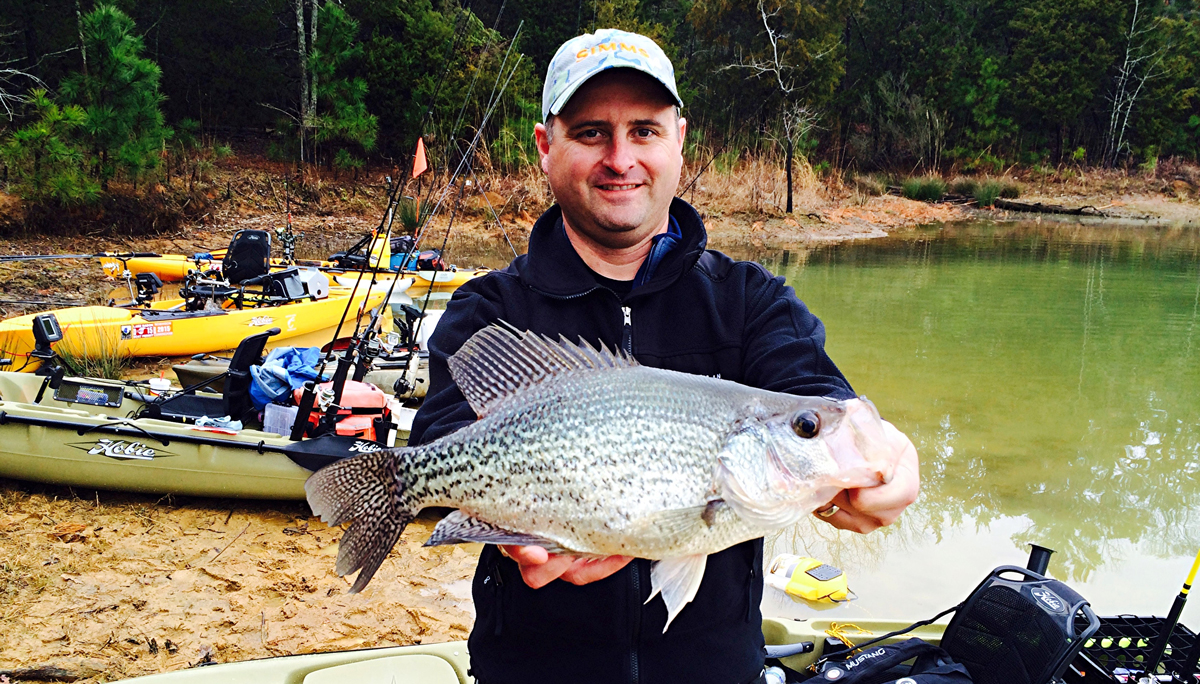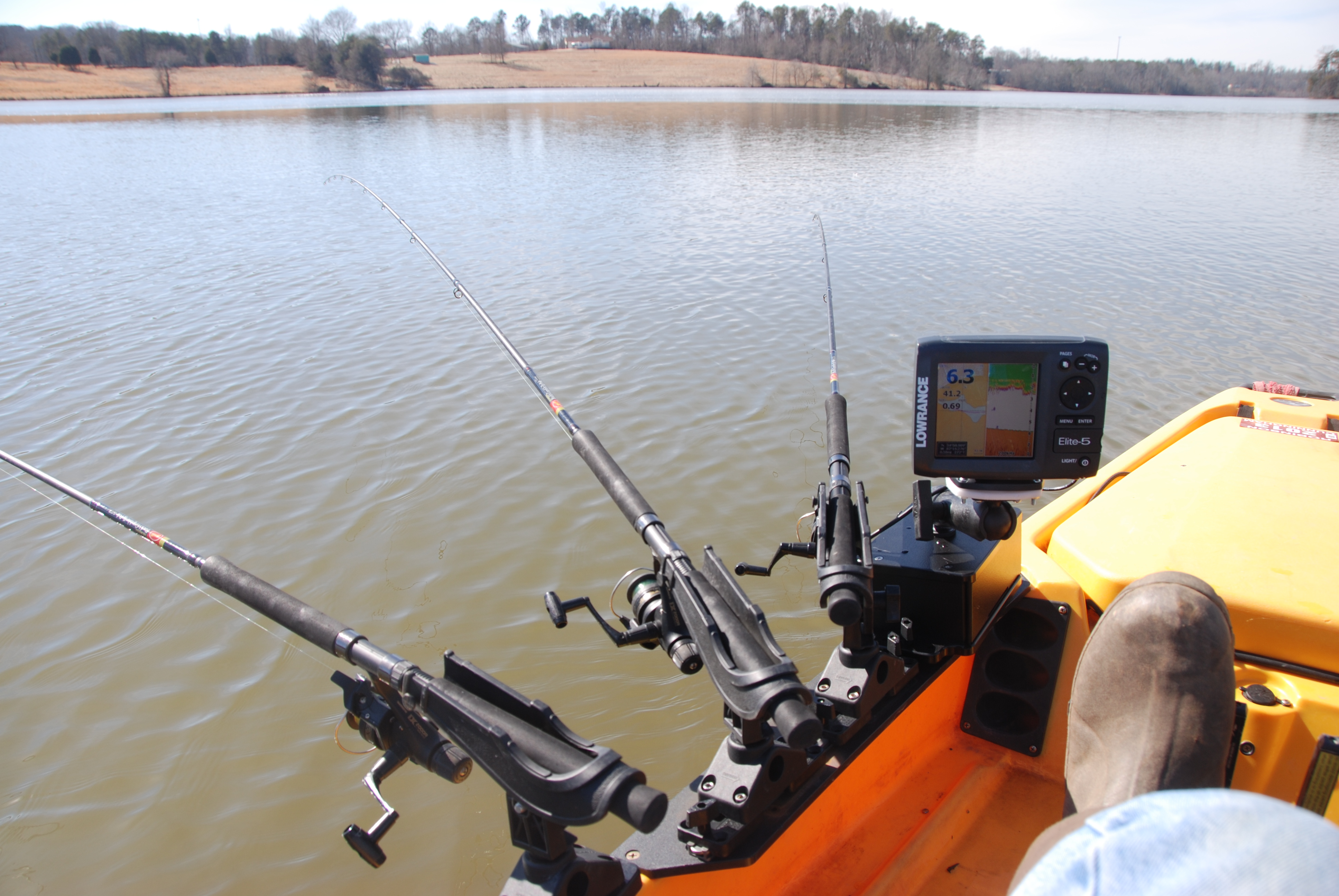
The number of anglers joining the ranks of the plastic armada grows daily. With each new recruit, prospective anglers want to know what they can do to target their favorite species from their new paddle craft. This month, Palmetto Paddling begins a series of species-specific information describing how to rig for and target a particular fish species each month.
For March, we’re going after America’s favorite gamefish, the crappie. You can look it up; according to creel surveys done by the U.S. Fish and Wildlife Service, more people fish for crappie than any other species.
Granted, a kayak angler can take a single rod and fish for any fish that swims, but to be most effective, especially when targeting a fish with the migrational and schooling habits of crappie, it’s best to pre-rig your kayak to complement the style of fishing you intend to do.
Early in March, crappie will be moving along traditional routes on their way to spawning grounds. Spawning will begin to take place by the end of the month and into April. One of the best ways to catch crappie during the prespawn migration is by trolling. This equates to a multiple-rod approach, either pushing baits forward or pulling them behind the boat. For this, your kayak needs rod holders.
Rod holders can be positioned either along each gunwale or across the bow. Few, if any, kayak-specific rod-holder systems are available for crappie, leaving some anglers to design and create their own system. Rigging for tight-lining, aka spider rigging, allows an angler to push baits forward, using 9- to 14-foot rods to dangle baits out in front of the boat.
If using a paddle- versus a pedal-driven kayak, be sure to allow room on each side for the paddle to clear without hitting the rods. Typical tight-lining speeds are slow, less than 1 mph, so a deep, easy paddle stroke is sufficient to propel the boat.
The same rod-holder setup also needs to be adjustable to spread the rods to each side for long-line trolling behind the boat. Here, single or tandem jigs are cast 30 to 60 feet and slow-trolled behind the boat. Long-lining speeds are typically 1.0 to 2.0 mph depending on how high in the water column you want your baits to swim.
Again, make sure rods extend far enough to the right and left so you aren’t paddling into your lines. Another good tip is to stagger the lengths of the rods — 12-, 9- and 6-foot rods on each side — so that lines are spread out, and angle each rod holder successively from higher to lower so one rod does not bend back into the next rod when a fish is on.

Once crappie move to the backs of creeks to spawn, it’s time to ditch the multiple rods and go with one jigging or shooting rod. South Carolina’s abundant rainfall since the fall will have many creek deltas full of water. That dead-end cut that was full of undergrowth last April will now be full of water and crappie. A roadway that crosses a culvert between the main lake and one of these sloughs will be an excellent place to dump a kayak off the top of the car or back of the truck to fish an area no powerboat can reach.
Use your sonar, map or other topographical media to determine the old creek or ditch path and dip a crappie jig around every piece of visible cover on the edge of the channel. Hold an 8- or 9-foot jig pole with 6- to 8-pound line and a 1/16-ounce jig in one hand and use a small, one-hand paddle to scull along the vegetation with the other.
On water bodies where crappie utilize boat docks to spawn, a kayak makes an excellent assault vehicle for shooting docks. A low trajectory is required to skip a jig into the recesses of the structure, and it’s hard to get any closer to the water than sitting in a kayak.
Make sure to work systematically around the dock, shooting to all corners and the flat area where the walkway meets the dock. Unlike the other three seasons, there won’t be much need to let the jig fall, as a crappie will attack the jig once it enters it’s territorial space. A 1/32-ounce jighead with a rubber body and marabou tail are great choices for shooting docks.
A few crappie-specific pieces of gear to have on a kayak should include a good sonar unit with a topographic map. Channel edges and drop-offs are hot areas this month, with fish moving from 15 to 7 to 4 feet as the month progresses. Graphing spawning crappie is an unlikely prospect, but look for them during the prespawn migration to be high in the water column and around baitfish.
A landing net with an extended handle is a good idea. A long-handled crabbing net makes a good, cheap way to land a flopping fish at the end of a long pole with limited mobility to maneuver.
Finally, make sure you pack a cooler to put your fish in. You’ll need it.




Be the first to comment